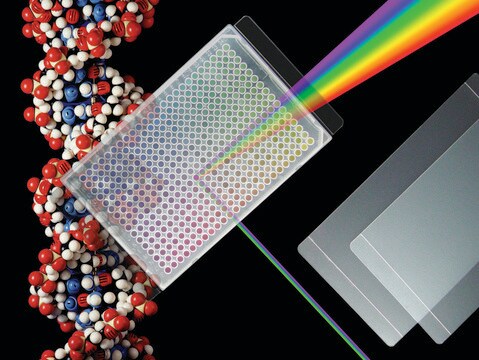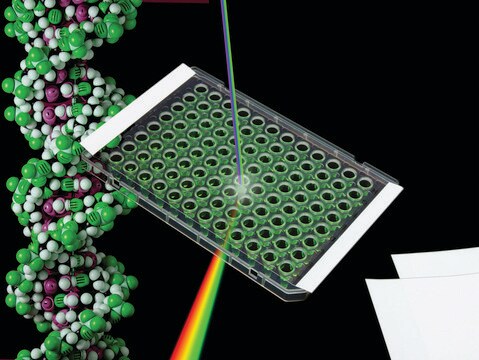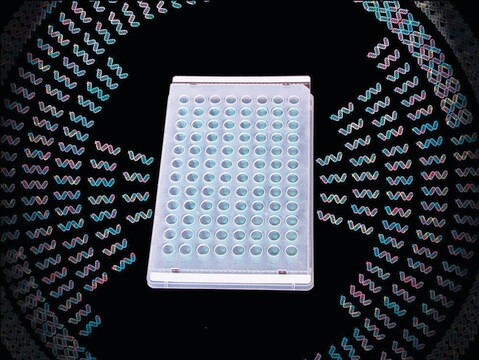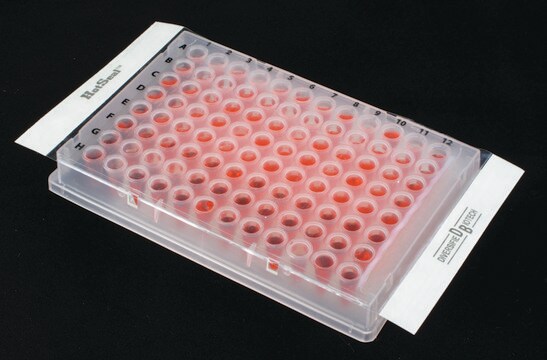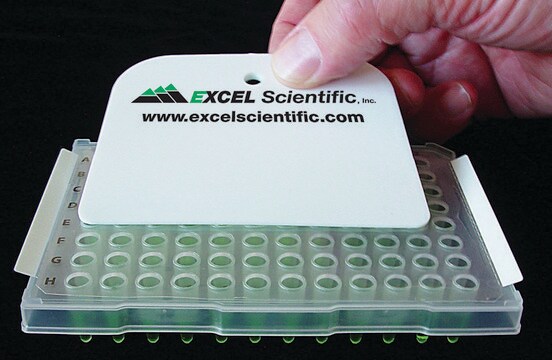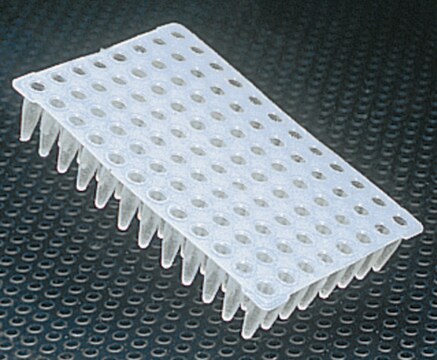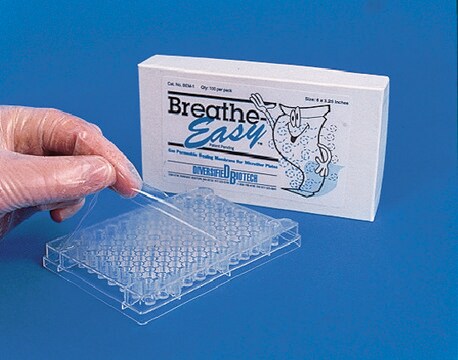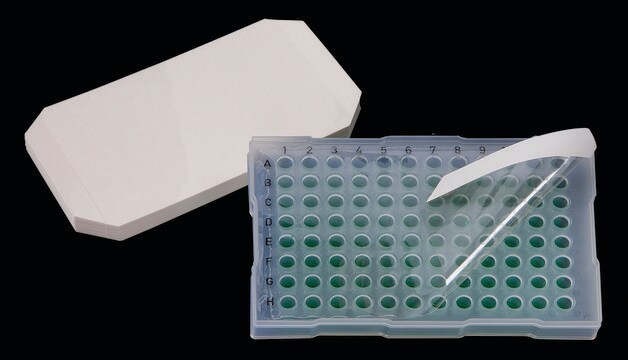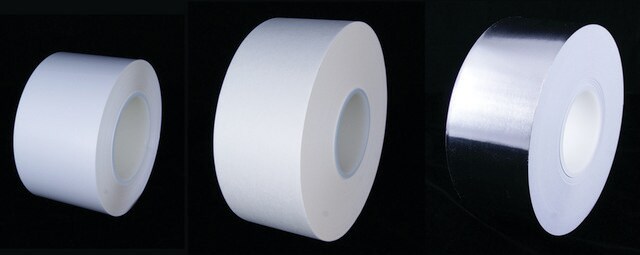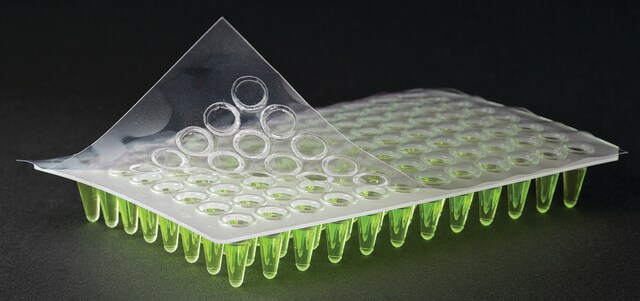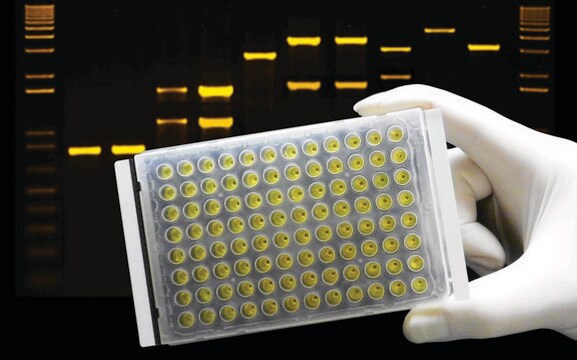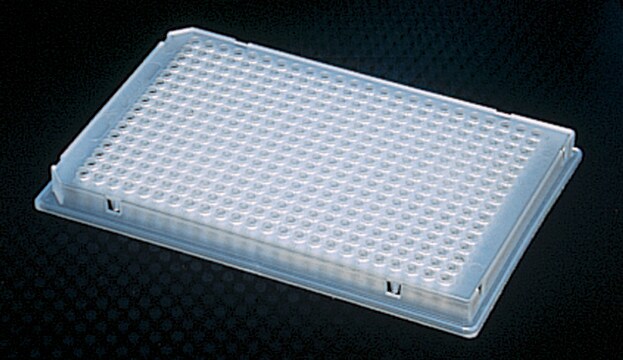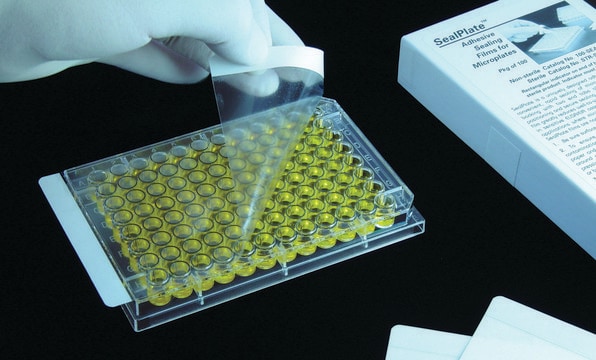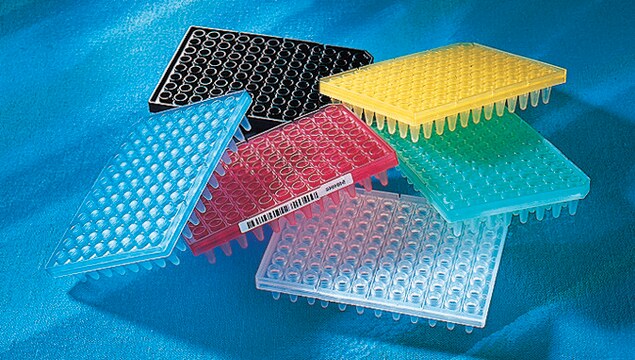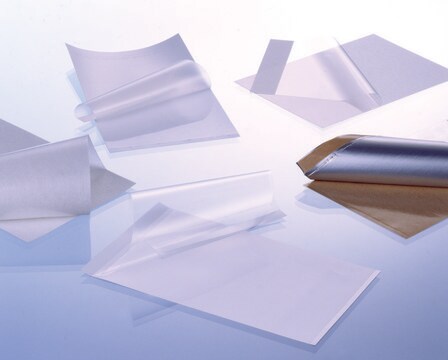Z722553
Película ThermalSeal RT2RR™
non-sterile, sealing films for real-time qPCR
Sinónimos:
ThermalSeal RT™ film, real-time qPCR plate seal
About This Item
Productos recomendados
material
polyester film
sterility
non-sterile
packaging
pack of 100 ea
manufacturer/tradename
Excel Scientific TS-RT2RR-100
technique(s)
PCR: suitable
qPCR: suitable
L
130.6 mm
W × L
7.78 cm × 13.08 cm
W
77.8 mm
color
clear
¿Está buscando productos similares? Visita Guía de comparación de productos
General description
- Ultra-high optical clarity
- Heat resistant, recommended for temperatures from -40°C to +120°C
- Certified DNase, RNase, and nucleic acid free
Dimensions 77.8 by 130.8 mm. With end tabs removed, length is 118.1 mm with 45° corners.
- Ultra-high optical clarity
- Fit within plate rim to prevent evaporation due to sealing film lifting
- Heat resistant, recommended for temperatures from
- -40 °C to +120 °C
- Certified DNase, RNase, and Nucleic Acid free
Legal Information
Elija entre una de las versiones más recientes:
Certificados de análisis (COA)
¿No ve la versión correcta?
Si necesita una versión concreta, puede buscar un certificado específico por el número de lote.
¿Ya tiene este producto?
Encuentre la documentación para los productos que ha comprado recientemente en la Biblioteca de documentos.
Los clientes también vieron
Protocolos
The most common application for qPCR is the measurement of a gene transcript or copy number quantity relative to one or more reference genes using probe detection.
A protocol that can be used as a basic template for qPCR incorporating a detection probe that is specific to a single target. In these reactions, primers and probe are included at a final concentration of 200 nM and are run using LuminoCt® ReadyMix™.
A protocol that can be used as a basic template for qPCR incorporating up to four detection probes. In these reactions, primers and probe are included at a final concentration of 200 nM and are run using LuminoCt ReadyMix.
Primer Concentration Optimization Protocol is an approach to create a matrix of reactions. This is used to test a range of concentrations for each primer against different concentrations of the partner primer.
Nuestro equipo de científicos tiene experiencia en todas las áreas de investigación: Ciencias de la vida, Ciencia de los materiales, Síntesis química, Cromatografía, Analítica y muchas otras.
Póngase en contacto con el Servicio técnico